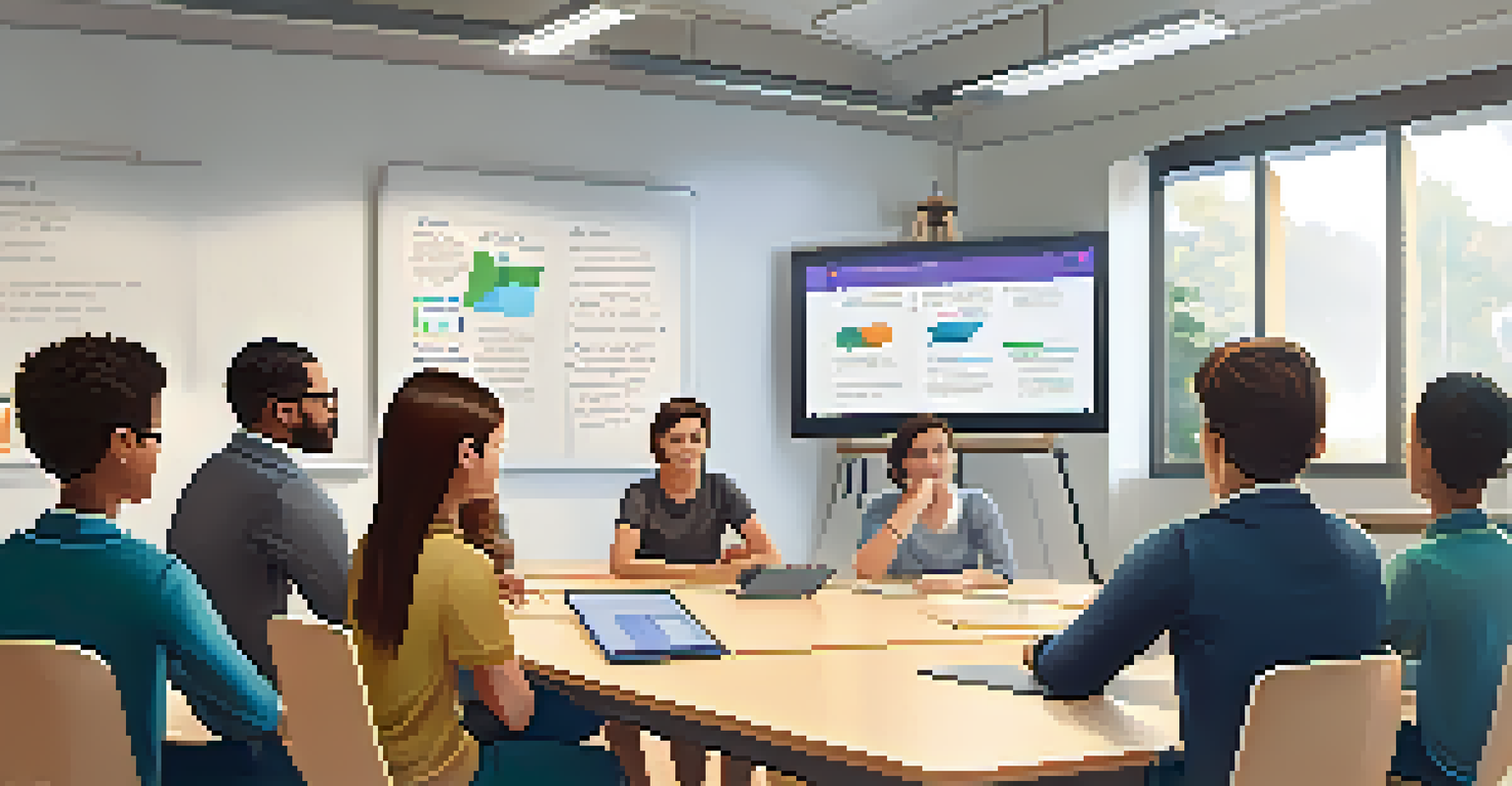The Importance of Feedback in Inquiry-Based Learning Cycles

Understanding Inquiry-Based Learning: A Quick Overview
Inquiry-based learning (IBL) emphasizes student-driven exploration and critical thinking. Instead of traditional rote memorization, it encourages learners to ask questions, investigate, and discover answers themselves. This method fosters deeper understanding and engagement, making learning more meaningful.
Feedback is the breakfast of champions.
At its core, IBL shifts the role of the teacher from a knowledge provider to a facilitator. This allows students to take charge of their learning, building skills that are essential for lifelong learning. By nurturing curiosity, IBL prepares students to tackle real-world problems creatively and effectively.
However, for IBL to be successful, it must be supported by effective feedback. Feedback acts as a compass, guiding students through the learning process and helping them refine their inquiries, ultimately enhancing their learning journey.
The Nature of Feedback in Learning Cycles
Feedback in learning cycles is not just about grades or evaluations; it's an ongoing conversation between students and educators. It should be timely, specific, and constructive, addressing both strengths and areas for improvement. When feedback is delivered in a supportive manner, it fosters a growth mindset among students.

An example of effective feedback can be seen in peer review sessions, where students critique each other's work. This collaborative approach not only encourages open communication but also allows students to learn from their peers' perspectives. Such interactions can spark new ideas and enhance their understanding of the subject matter.
Inquiry-Based Learning Empowers Students
Inquiry-based learning encourages students to take charge of their education by exploring questions and seeking out answers, fostering critical thinking and engagement.
Moreover, feedback is most effective when it is integrated into the learning process. Rather than waiting for the end of a project, continuous feedback during inquiry activities keeps students engaged and motivated, helping them stay on track with their learning goals.
How Feedback Enhances Student Engagement
When students receive feedback that resonates with them, it boosts their motivation and engagement. Positive reinforcement, such as acknowledging their efforts, can encourage them to delve deeper into their inquiries. Engaged students are more likely to take ownership of their learning journey.
The greatest gift is not being afraid to question.
For instance, consider a science project where students investigate local ecosystems. Constructive feedback from their peers and teachers can ignite their passion for the subject, compelling them to explore further and ask more profound questions. This cycle of inquiry and feedback leads to richer learning experiences.
Additionally, when students see tangible improvements as a result of feedback, it reinforces their belief in their abilities. This empowerment can lead to increased participation and a willingness to tackle more challenging inquiries, ultimately enriching their educational experience.
Creating a Feedback-Rich Environment
To cultivate a feedback-rich environment, educators must establish a culture of trust and openness. Students should feel safe to express their thoughts and questions without fear of judgment. This supportive atmosphere encourages honest dialogue, making feedback more effective.
Incorporating regular check-ins and feedback sessions can significantly enhance this environment. For example, educators might schedule weekly reflections where students can discuss their progress and receive constructive input. This consistency reinforces the importance of feedback in the learning process.
Feedback is Key to Student Growth
Effective feedback serves as a vital tool for guiding students' learning journeys, providing them with the support needed to refine their inquiries and enhance their understanding.
Moreover, utilizing various feedback methods—such as written comments, verbal discussions, or digital tools—can cater to diverse learning styles. This versatility ensures that all students have the opportunity to engage with the feedback in a way that resonates with them.
The Role of Self-Assessment in Feedback
Self-assessment is a powerful tool in the feedback process, encouraging students to reflect on their work and identify areas for growth. By evaluating their own inquiries, students develop critical thinking skills and become more aware of their learning processes. This self-reflection fosters a sense of accountability for their learning.
For instance, after completing a project, students might use a rubric to assess their work before receiving external feedback. This process not only prepares them to accept constructive criticism but also allows them to celebrate their successes. Recognizing their achievements can motivate them to strive for further improvement.
Additionally, teaching students how to set specific goals based on their self-assessment can enhance their learning experience. This goal-setting encourages a proactive approach to learning, making feedback not just a reaction but a roadmap for future inquiries.
Challenges in Providing Effective Feedback
While feedback is crucial, providing it effectively can pose challenges for educators. Time constraints, large class sizes, and varying student needs can make it difficult to deliver personalized feedback consistently. However, overcoming these challenges is essential for fostering an effective learning environment.
One strategy to address these challenges is to prioritize feedback based on students’ needs. Educators can focus on common areas of difficulty, providing group feedback that addresses widespread issues while still offering individual input when necessary. This approach can maximize the impact of feedback while saving time.
Creating a Trusting Learning Environment
Establishing a culture of trust and openness enables students to feel safe sharing their thoughts, making feedback more impactful and encouraging proactive engagement in their learning.
Moreover, leveraging technology can streamline the feedback process. Tools like online platforms or apps enable educators to leave comments and suggestions in real-time, allowing for more immediate and engaging feedback for students.
The Future of Feedback in Inquiry-Based Learning
As education continues to evolve, the approach to feedback in inquiry-based learning will also transform. Embracing innovative methods, such as digital portfolios or collaborative online platforms, can enhance the feedback experience for both students and educators. These advancements can create more dynamic and interactive feedback loops.
Furthermore, as we increasingly recognize the importance of social-emotional learning, feedback will play a pivotal role in fostering resilience and perseverance in students. By emphasizing growth and effort rather than solely outcomes, educators can nurture a positive learning environment that values feedback as a tool for development.

Ultimately, the future of feedback in inquiry-based learning lies in its ability to adapt and respond to the needs of students. By embracing change and prioritizing effective feedback, we can enhance the learning experience and prepare students for success in an ever-evolving world.